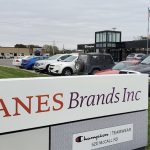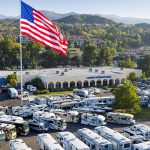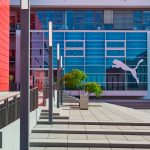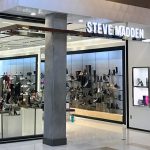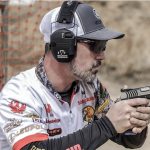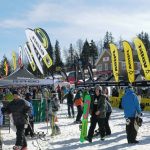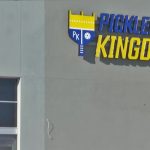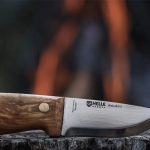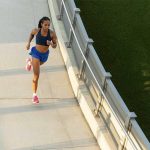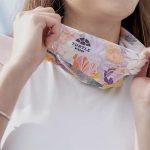Hibbett Sports Inc. posted a 3.6% increase in sales to $147.9 million in the fourth quarter, while comps decreased 2.8%. Earnings were flat at $7.6 million, or 26 cents a share, against $7.6 million, or 25 cents a share in the year-ago period. The small-market-operator said its first quarter performance had improved noticeably. Unlike some competitors, it also predicted earnings would grow this year.
On a conference call with analysts, company chairman and CEO Mickey Newsome described first quarter sales as “greatly improved” and running up positive high-single-digits. Items per transaction are also up. “We are encouraged but cautious with these results,” said Newsome. “There is lots of uncertainty in front of us, and in front of the economy in general. The first quarter feels good to us, obviously.”
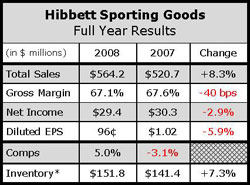
Newsome attributed much of the improvement to a strong focus on systems. In particular, Hibbett's new E3 replenishment system has apparently improved sales and inventory turns. About 20% of HIBB inventory is now on replenishment, up from 10% to 12% in the fourth quarter. Hibbett expects it reach over 30% by the end of the year.
“We are in-stock more, with the right product and the right stores, and the right quantity relative to last year,” said Newsome. But he also said the chain is making better calls and getting greater vendor support as it expands. “Vendors know we have cash on our balance sheet and that we are not a credit risk,” said Newsome.
Finally, Hibbett said it being helped because 73% of its stores are in strip centers. Strip center stores outperformed enclosed malls during the quarter and are still outperforming in the first. Newsome said this partly reflects healthy sales at Wal-Mart, an anchor at many centers.
Jeff Rosenthal, HIBBs newly-minted president and COO, noted that footwear is up double-digits in the first six weeks of the first quarter, with the women's business comping positive. Apparel is up in single-digits. Equipment is slightly off, but that marks a “much improved” performance on fewer inventories.
In the fourth quarter, comps were down 2.6% in both November and December, and fell 3.8% in January. Newsome noted that January “actually was stronger than as indicated” as it incurred 350 days of lost selling store days due to the snow and ice in Kentucky and surrounding states. “Without that, we feel January would have probably been a little bit better than November and December,” said Newsome. Hibbett's non-urban stores outperformed urban centers.
The number of items per transaction was up 1.2%,. Average selling prices were up 2.3%, due to greater sales of higher-priced footwear. Apparel prices also increased due to the introduction of The North Face, which “has done pretty well” and is being expanded.
Athletic apparel, led by Nike, Under Armour and The North Face, was up high-single-digits. Youth apparel, both boys and girls, was up low- to mid-single-digits. Overall branded apparel was off low-single-digits; fashion urban apparel was off double-digits. Licensed was “very disappointing,” down double-digits. Top performing licensing areas were mixed martial arts, mostly TapouT, and MLB hats by New Era.
Branded accessories and footwear accessories were up mid-teens.
Footwear was up low-single-digits, led by kids and men's lifestyle products. Women's was off double-digits. Key performers were Nike Shox, Air Force 1s, and Jordans; as well as Under Armour training, Asics technical running shoes and DC Shoes. Equipment was off double-digits.
Gross margins increased 260 basis points to 32.9% of sales, due to improvements in markdowns, inventory shrinkage, and inbound freight. SG&A costs increased 140 basis points to 21.7% of sales, due to increases in incentive competition and a deleveraging of store payroll.
Total inventories increased 7.3% over the previous year, but decreased 3% on a comp store basis. The company ended the quarter with $20 million in cash, and zero short-term debt.
Gross margins increased 260 basis points to 32.9% of sales, due to improvements in markdowns, inventory shrinkage, and inbound freight. SG&A costs increased 140 basis points to 21.7% of sales, due to increases in incentive competition and a deleveraging of store payroll.
Total inventories increased 7.3% over the previous year, but decreased 3% on a comp store basis. The company ended the quarter with $20 million in cash, and zero short-term debt.
Rosenthal said all genders of footwear are running up in the first quarter but kids and lifestyle are up the most proportionately. Rosenthal was most encouraged that women's was trending positive for first time in awhile. Hibbett is also focusing slightly more on technical running and doing more on replenishment in the area. Rosenthal added that the Under Armour running launch “performed what we expected. It is kind of a steady, steady shoe. It is doing very well.”
But he said the compression business “in general has matured. There isn't a lot of expansion there. I think it is a pretty mature business. There are a lot of items around the compression, but in general the compression business is a pretty mature business.”
For the year, earnings are expected to range between $1.03 to $1.17 a share in 2009, up from $1.02 earned in 2008. Newsome said the second quarter “could be more of a challenge” because the company achieved a 5% comp gain in Q207 as stimulus checks arrived from the government. “Those were very meaningful to our consumer, but we do feel good about the third and fourth quarter,” said Newsome.

